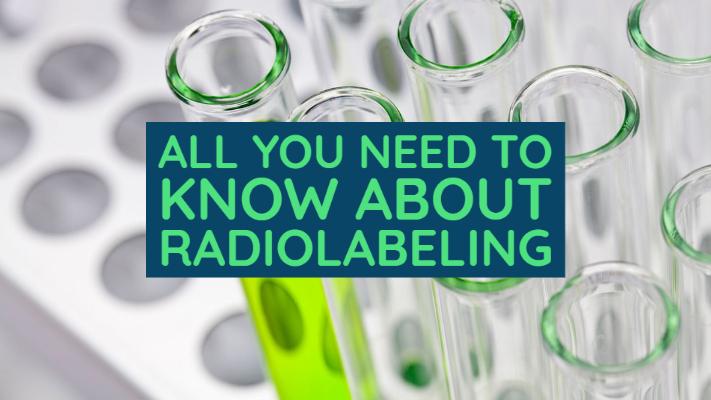

Radiolabeling plays a key role in environmental case studies as well as drug development and research. Thanks to radiolabeling, scientists are able to monitor the breakdown or movement of target molecules. With this process, drug researchers are able to track any new drug in terms of how it gets metabolized as it moves through the body. To help achieve this, isotopes of the same atom are used to replace atoms in the target molecule.
In a nutshell, radiolabeling allows scientists to ‘tag’ molecules using radioactive isotopes. The molecules are easily traceable using imaging techniques after carbon isotopes like C14 replace carbon atoms in a given molecule. Though it is possible to trace these isotopes, they don’t interfere with the normal functioning of the molecule under study. Keep in mind that there are several ways to go about radiolabeling using various radiolabeled compounds. The most common radiolabeled compounds include sulfur-35 (35S), tritium (3H) and carbon-14 (14C labeling).
Carbon 14
Carbon-14 is the most preferred radiolabeled compound because it’s able to generate duplicate elements by substituting carbon atoms. Note that the use of carbon for scientific research is not something that started in the 21st century. You might be surprised to learn that the physicist Willard F. Libby discovered radiocarbon dating way back in 1946. Carbon is present in most drug molecules today and this is why it easily offers radiolabeling sites and better stability than other radioisotopes.
Specifically during storage, stability is a factor that cannot be overlooked when using radiolabeled compounds. Now that carbon-14 has a long half-life, researchers don’t worry much about decay during long and extensive studies. In general, carbon-14 is a highly versatile compound whose production can be customized during GMP synthesis. For effective and safe drug production, C14 has to be part of the equation.
GMP Standards and C14 Radiolabeling
Observing GMP standards is crucial when it comes to pharmaceuticals. During production, the preferred radiolabeled compound is in most cases manufactured and tested only once in small lots. This tells you that before being used, the compound needs to be suitably manufactured. All impurities need to be identified and the C14 atom has to be correctly positioned before the drug development process starts. Now that C14 radiolabeling yields effective and stable compounds, it is the best option when GMP standards have to be obeyed.
The ease of carbon atom movement is what makes 14C labeling a better option than other compounds. This explains why carbon 14 is the element of choice when it comes to drug development and radiolabeling as a whole. With that said, let us now take a look at practical examples where radiolabeling comes in handy.
1. Oceanography
Truth be told, tracking particle movement in bodies of water can seem an impossible task. With the help of radiolabeling, however, this becomes an easy task for oceanographers. In most cases, radium isotopes are all that oceanographers need to monitor water movement in rivers, bays, and groundwater sources.
2. Medicine
Making an accurate medical diagnosis could mean the difference between life and death. Fortunately, this is what radiolabeling does best and thus help physicians avoid any misdiagnosis. This is achieved by giving patients radiolabeled drugs, either intravenously or orally. CT (Computed Tomography) scanning, MRI (Magnetic Resonance Imaging) and other imaging techniques help capture particular body part images after the isotopes enter the body. This goes a long way in saving lives by showing the inmost working mechanisms of cells and organs.
3. Drug Development and Research
Scientists heavily rely on radiolabeling when studying the metabolic activities of test drugs. This is such a big advantage because the researcher gets to know all that is going on as the test drug gets metabolized and eradicated from the body. This means that chemists understand what is happening during every step of the process. In the end, the pharmaceutical market benefits from new and effective drugs much more quickly. Were it not for radiolabeling, drug development and research would take ages and this can potentially result in a lot of fatalities.
Bottom Line
As you can see, radiolabeling is a key driver when it comes to developing and testing new materials. If your desire Is to learn more about it, contacting a radiolabeling company is all you need to do.
